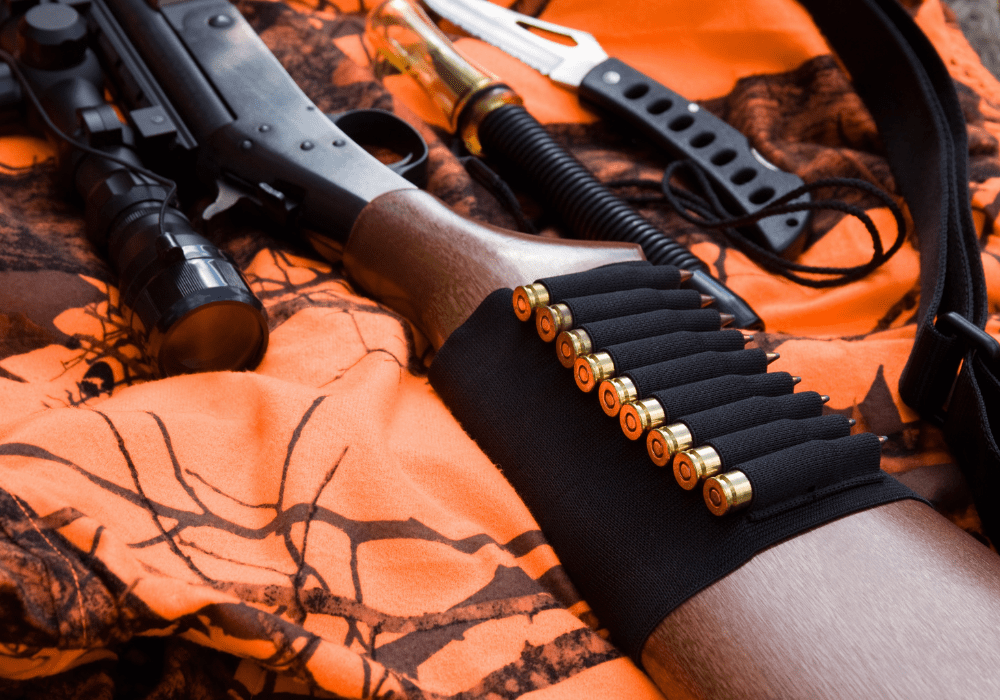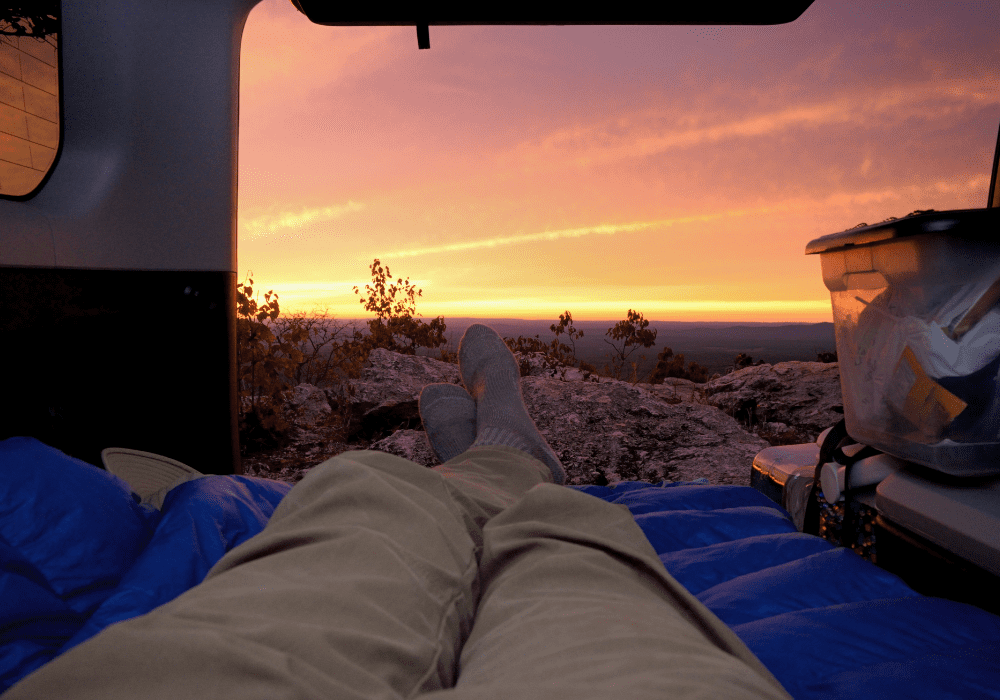
10 Best Places To Hunt in Alaska
With an area of over 1.7 million km², Alaska is the USA’s largest and also most sparsely populated state. With half of the state’s population living in the Anchorage Metropolitan Area, most of the state is federally owned public land which includes millions of acres of national forests, national parks, and wildlife refuges.
Known as “The Last Great Wilderness”, Alaska is most famous for the Iditarod, gold mining, native heritage, outdoor adventures, and living a more independent and self-sufficient way of life.
Table of Contents
Experience Hunting in the Last Great Wilderness
With its challenging atmosphere, varied terrain, and expansive wilderness teeming with wildlife, Alaska is every hunter’s dream. This article helps you look for big game species, select an area, and suggest hunting outfitters to guide you on your hunt in the Last Great Wilderness.
1. Cordova Area: Moose, Bear, & Deer
The Cordova area consists of mountainous, hilly, forested, and wetland terrain. East of Cordova is the Copper River whose large river delta is famous for being a waterfowl stopping area. To the west of Cordova is the Gulf Coast which gives way to Prince William Sound.
Rain and storms are common in the area and it starts snowing in October so expedition quality gear is a must.
Cordova’s big game includes moose, brown and black bear, Sitka black-tail deer, and some mountain goats. As earlier mentioned, large numbers of waterfowl can also be seen heading into and out of the area.
Locally owned and operated Serenity Adventures lets you harvest the above-mentioned species as well as provide hunting transportation and lodging.
2. The Panhandle: Deer, Black Bear, & Mountain Goat
The Panhandle’s geography mostly consists of large islands like Baranof, Chichagof, Kuiu, Kupreanof, and Prince of Wales Admiralty. Large glaciers, scenic fjords, and thick forests also litter the landscape where they’re strongly influenced by the warm waters of the Pacific ocean. The Panhandle’s northern end is dominated by mountains and coastal forelands with some glaciers and rivers dotted in between.
Spring is when the weather is warmest and (relatively) dryest. The weather in August is also pleasant but with the occasional rain and storms. It’s a good idea to prepare for inclement weather.
Deer are the regional favorite because of their abundance, despite their smaller size. Black bears are another regional favorite and are usually common in most of the area. You can usually find mountain goats on Baranof Island and along the mainland.
Southeast Alaska Guiding provides boat-based hunting trips for Brown Bear, Coastal Black Bear, and Mountain Goat.
3. Seward: Black Bear, Goat, & Wildfowl
Seward consists of all the freshwater and saltwater between Cape Fairfield and Gore Point. Seward City is the only city in the area. It’s a classic Alaskan town complete with mountains, glaciers, and trails.
Spring is the best time to visit for black and brown bear hunting. Fall is black-tailed deer and mountain goat season.
Big game like Sitka Black-tail deer, bears, and mountain goats are common in the area. Smaller game species include wildfowl like ptarmigan and geese.
Alaska Offshore Outfitters provides hunting trips for Black Bear and Sitka blacktail Deer. For smaller game hunts, you can contact Alaska Wildfowl Adventures.
4. The Kenai Peninsula: Caribou, Moose, Sheep, & Bear
The Kenai Peninsula is located between Cook Inlet and Prince William Sound. Its mostly glacier-covered mountains stretch from Turnagain Arm through the peninsula’s eastern side and to the Gulf of Alaska. Its western side is low and marshy with small lakes dotting the landscape and larger lakes to the southwest.
The weather in the area ranges from semi-maritime to maritime. This means you can expect relatively mild summers and cool — but not cold — winters.
You can get opportunities to harvest caribou, moose, Dall sheep, and mountain goat. While the area has brown bears, black bears are the more numerous species. You can also hunt for small game species such as spruce grouse, ptarmigan, and hare.
River Rock Lodge provides opportunities to harvest Moose, Black Bear, and Brown Bear. For Caribou and Dall Sheep hunts, you can contact Arrowhead Outfitters LLC.
5. The Kodiak: Brown Bear, Deer, & Sea Duck
Located about 130 kilometers from The Kenai Peninsula, Kodiak Island stands as a haven for many species of fresh and saltwater fish, marine mammals, shorebirds, and the world’s largest brown bears. The island is mountainous and heavily forested from north to east and provides ample sheltered anchorages for boats.
Weather in The Kodiak usually ranges from pleasant to severe. Deer populations in the area have been known to suffer because of heavy snowfall.
The island provides opportunities to hunt Sea Duck, Sitka Black-tailed Deer, and (of course) Kodiak Brown Bear.
Kodiak Wilderness Adventures provides hunts for all the above-mentioned species as well as accommodation and lodging.
6. Eastern Arctic: Bison, Caribou, & Muskoxen
Much of Alaska’s Eastern Arctic region is open tundra with just a few areas covered in black spruce forests. This area includes Alaska’s portion of the Yukon River and a significant portion of the Interior.
Being an Arctic region, this area experiences short cool summers and long, very cold winters. Summer temperatures barely go above freezing despite getting 24 hours of sunshine.
Large game species in the region include brown/grizzly bears, moose, and caribou.
Arctic North Guides provides a full-service hunting guide and outfitting and lets you harvest big game species like bears, moose, and caribou.
7. Interior Alaska: Sheep, Moose, Caribou, & Bear
Interior Alaska is a region of varied terrain. Most of the area is wilderness with mountains, braided rivers, Black spruce forests, seashores, and tundra land.
Summer temperatures in the area usually stay in the mid-70s but can sometimes reach 100° F. Light layers of snow can form on the ground in October and winter temperatures usually stay below 0° F.
Large game species in the area include Dall sheep, moose, caribou, black bear, and brown/grizzly bear.
For a full-service guided hunt, contact Interior Alaska Guides and Outfitters. This company offers yearly custom-tailored hunts for Dall Sheep, Moose, Caribou, Bison, and Bears at very reasonable rates.
8. Anchorage: Mountain Goat, Sheep, Wolf, and More
Anchorage is a port at the head of Cook Inlet lying at the base of the Chugach Mountains. The mountains block warm air from the Gulf of Mexico which keeps precipitation pretty low.
Summers in Anchorage are cool and mostly cloudy while the winters are long, freezing, and snowy. The temperature usually falls between 13 °F to 68 °F and rarely falls below -8 °F or above 75 °F.
Big game in Anchorage includes bear, moose, mountain goat, Dall sheep, Sitka Black-tailed Deer, and wolf.
Mike Odin’s Alaska Adventures offers guided and DIY hunts for all the above species except for wolves.
9. Bristol Bay: Brown Bear, Moose, & Waterfowl
Bristol Bay is located on the easternmost arm of the Bering Sea. Several rivers make their way into the bay. These include Cinder, Egegik, Igushik, Kvichak, Meshik, Nushagak, Naknek, Togiak, and Ugashik. Bristol Bay’s extreme tides coupled with an equally extreme number of shoals, sandbars, and shallows make navigation rather problematic.
Summers in Bristol Bay are long, warm, and humid with the winters being short, frigid, and wet. It’s usually partly cloudy year-round and the temperature usually falls between 29 °F to 84 °F.
With Bristol Bay being the most productive salmon ecosystem in North America, it’s no surprise that it also sports some of the largest brown bears. The area is also home to other big game like caribou and moose as well as smaller animals such as migratory birds-ducks, geese, cranes, and swans.
If you’re looking to hunt some of the biggest brown bears in Bristo Bay, contact JD’s Kniktuk Outfitters. This service offers guided hunts with the rifle, bow, and black powder.
10. Yukon–Kuskokwim Delta: Bear, Moose, Sheep, and Much More
The Yukon–Kuskokwim Delta is the place where the Yukon and Kuskokwim rivers meet and drain into the Bering Sea. Much of the area’s landmass is mostly tundral, although forests of black spruce, willow, and alder are also present.
Summers in the Yukon–Kuskokwim Delta are hot, humid, steamy, and mostly clear while winters are frigid, snowy, and windy. The year-round temperature usually falls between 29 °F to 94 °F.
Big game in the area includes Yukon Moose, Ston’s Sheep, Mountain Caribou, bear, and wolf.
MacMillan River Adventures offers hunts for all the above-mentioned game species as well as wolverine.





Pingback: Best Places for Hunting in North America | AdventureHacks